Horiatiki Salata or Greek Salad is a common component of a Greek meal and is typically composed of firm red tomatoes, crisp cucumbers, slices of onion, black olives, creamy feta cheese, dressed in olive oil and sprinkled with salt and dried oregano. This salad is a fresh summer salad, easy to make, deliciously fragrant, and healthy.
Origin and history
Greek Salad or ‘Horiatiki Salata’ (Χωριάτικη Σαλάτα), which means village-style or peasant-style salad (Horio means village in Greek) is a salad of a Greek origin.
The origin of salads, in general, starts with Hippocrates, the ancient Greek Father of Medicine when he advised patients to eat more raw vegetables to aid digestion.
The exact origin of this salad is debatable, but one thing can be sure is that the Horiatiki Salata was not really part of the country’s long-established traditional cuisine, since tomato did not become popular and started to be integrated into Greek recipes until the end of the 18th century, when the first tomatoes were first grown on the island of Syros, then in Santorini.
The Greek salad was traditionally eaten by Greek farmers, for whom the fresh salad ingredients were available.
Tips and notes
A Greek salad is easy to prepare but it all comes down to using the best and freshest ingredients:
- Plump tomatoes: if the skins are tough, you can peel the tomatoes; this does require an extra step of blanching the tomatoes.
- Crunchy cucumbers: put it in the salad without peeling it if it’s organic. If the peel is removed, its nutritional value drops to almost zero, as all the vitamins A, C, and fiber it contains are there.
- Red onion: sliced in rings.
- Olive oil: use a Greek extra virgin one.
- Olives: use olives of Kalamata type.
- Greek fate cheese: We all know that feta cheese is the cheese that is used in Greek salad, but… do not use cubed or crumbled feta. The feta is commonly served as a big slab on top of the salad. Since, we did have cubed feta we used it instead but remember that the authentic recipe serves it as a large chunk, not small cubes.
- Dried oregano: it’s a fresh salad, but only dried oregano should be used.
- You can add green bell peppers, but no red, yellow or orange peppers.
The tomatoes and cucumbers should be cut in fairly large chunks, not small cubes.
The authentic Greek salad does not include: lettuce, lemon, parsley, mint, fresh oregano, red or yellow peppers, croutons.
Before serving, put the salad in the fridge for a while. This will keep it cool, and the vegetables will marinate and diffuse their aroma in the oil, giving it an excellent taste.
Since the salad contains salty ingredients (feta, olives), and vegetables with a strong taste (onion, pepper), it would be good to add just a little salt.
Serving
The greek salad is considered as a full meal. It can be served with a good old crusty Greek-style bread.
Variants
There are a number of versions for this fresh and healthy salad across the Mediterranean countries:
- Arabic Fattoush salad ;
- Turc ezme salatası ;
- Iranian Shirazi salad ;
- Turc Çoban salatası ;
- Cretan Dakos salad.

Greek Salad
Ingredients
- 4 tomatoes
- 1 cucumber
- 1 green pepper
- ½ red onion
- 150 g feta cheese
- 3 tbsp olive oil
- ½ tsp salt
- ½ tsp black pepper (freshly grounded)
Instructions
- Wash and dry the tomatoes, cucumber, green pepper, and red onion.
- Cut tomatoes in wedges.
- Slice the cucumber into ½ inch thick slices, cutting the slices in half.
- Slice the pepper into rings, removing the stems and seeds.
- Cut the onion into thin rings.
- Put the tomatoes, cucumber, green pepper, and onion in a large bowl and combine.
- Add olives.
- Drizzle with olive oil.
- Add salt, black pepper, and dried oregano.
- Reserve in the fridge for about 10-15 minutes.
- Just before serving, place the feta on top on the salad.
- Sprinkle the salad with some oregano and drizzle with olive oil.




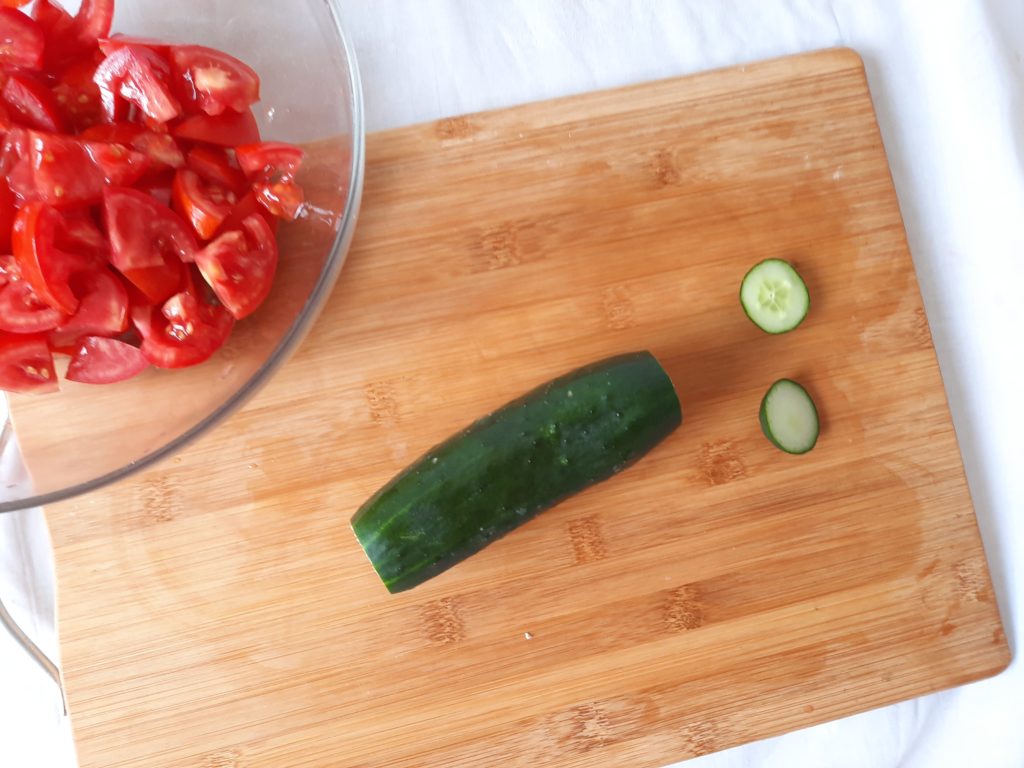
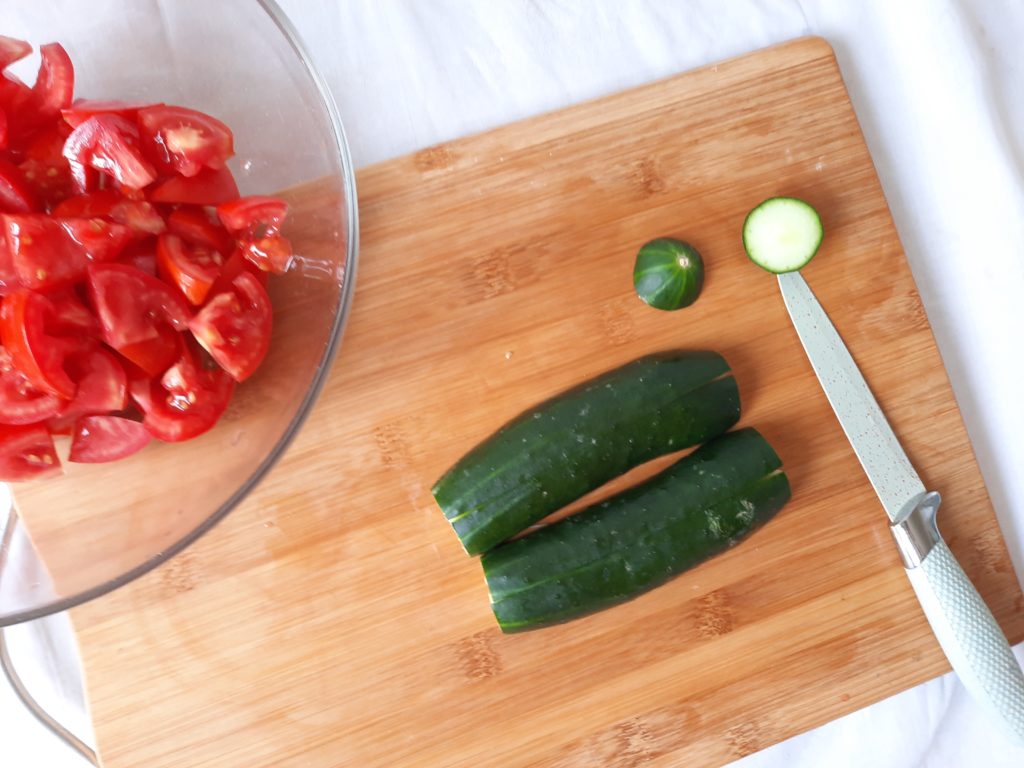
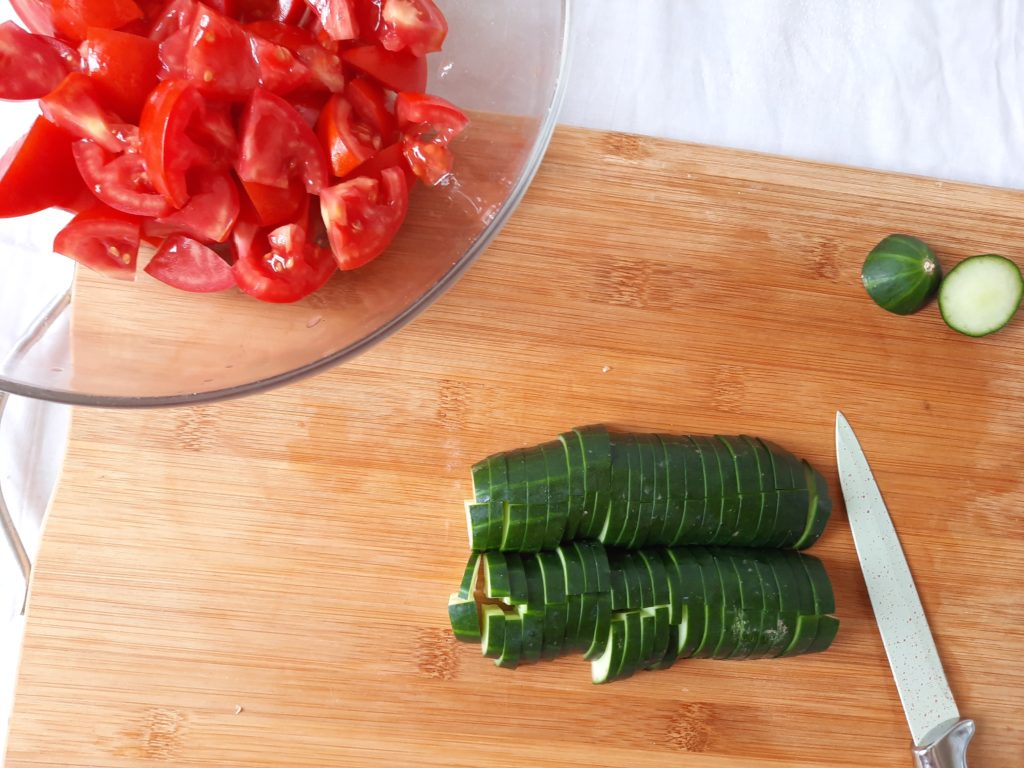
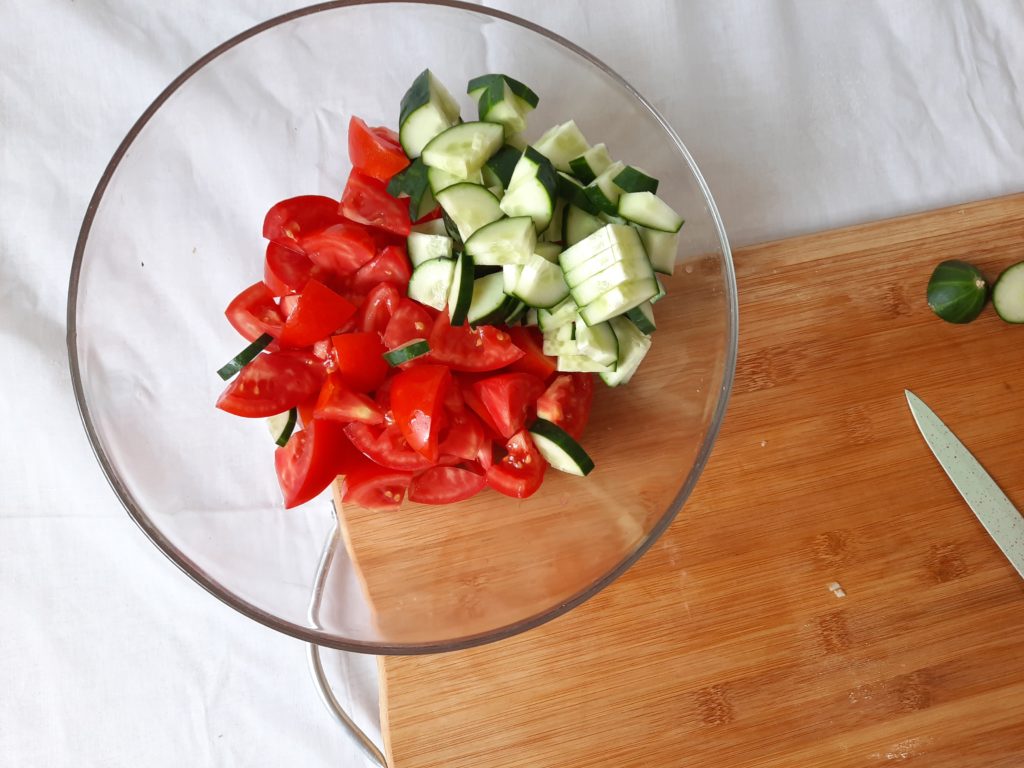
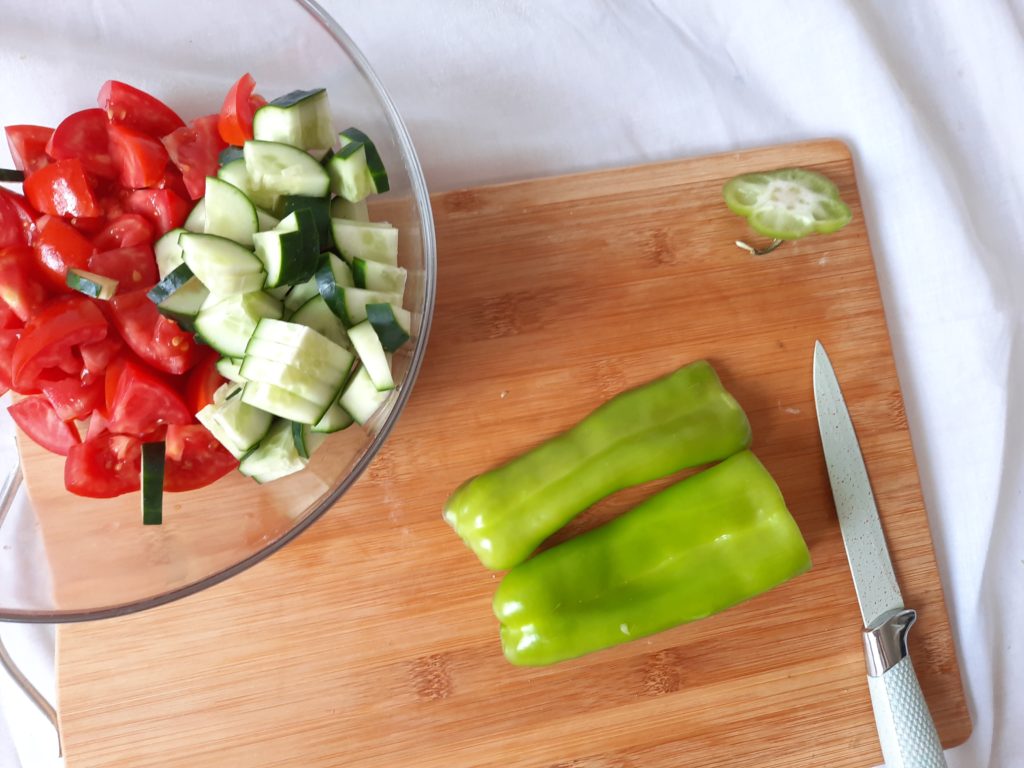
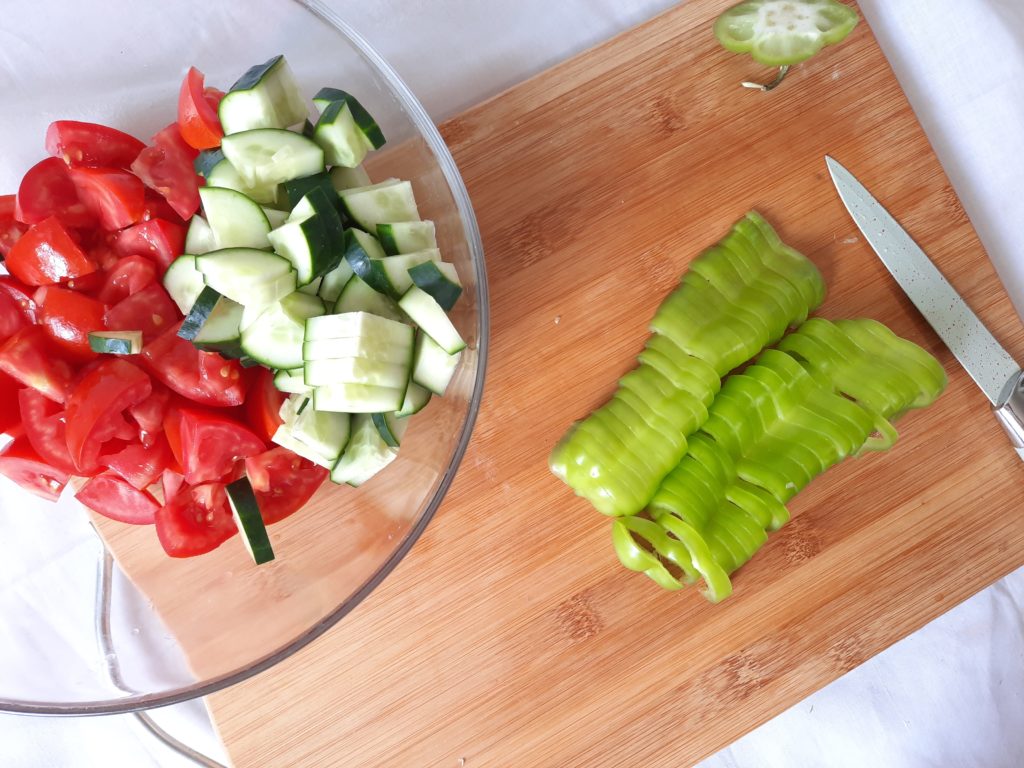
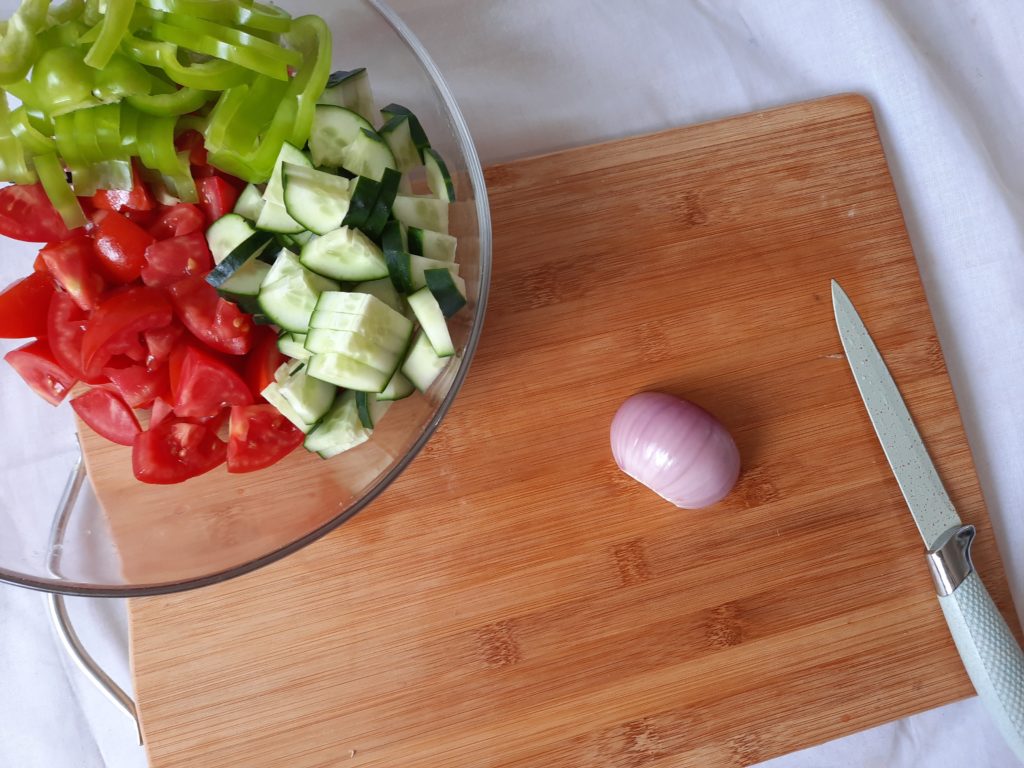
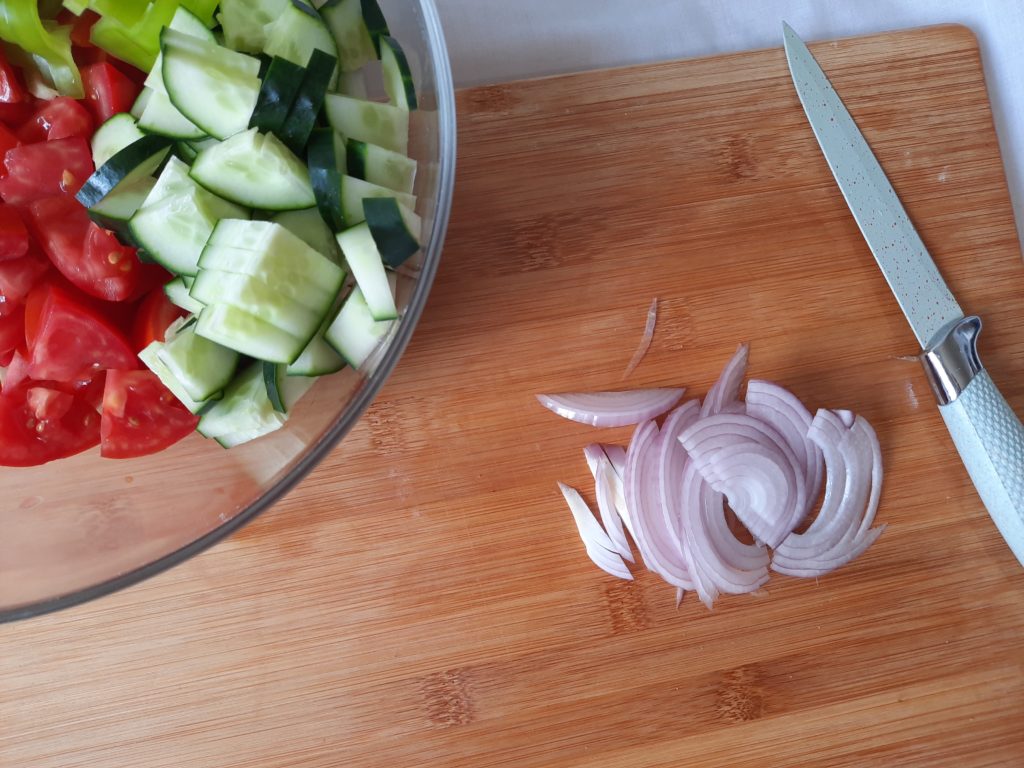
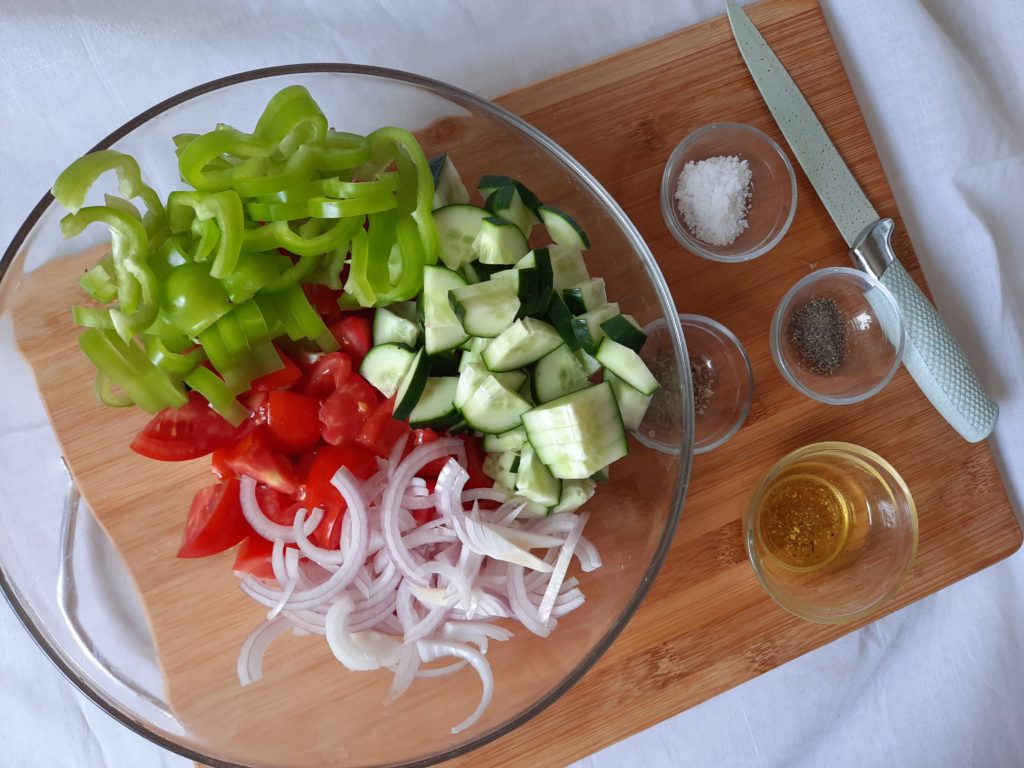
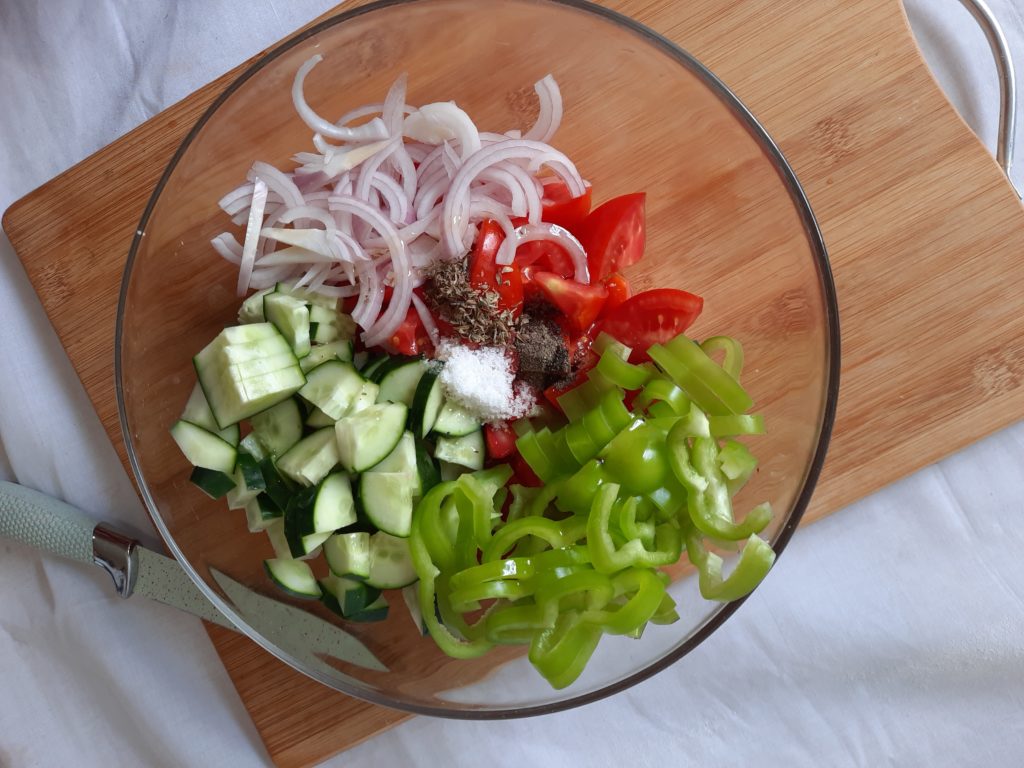
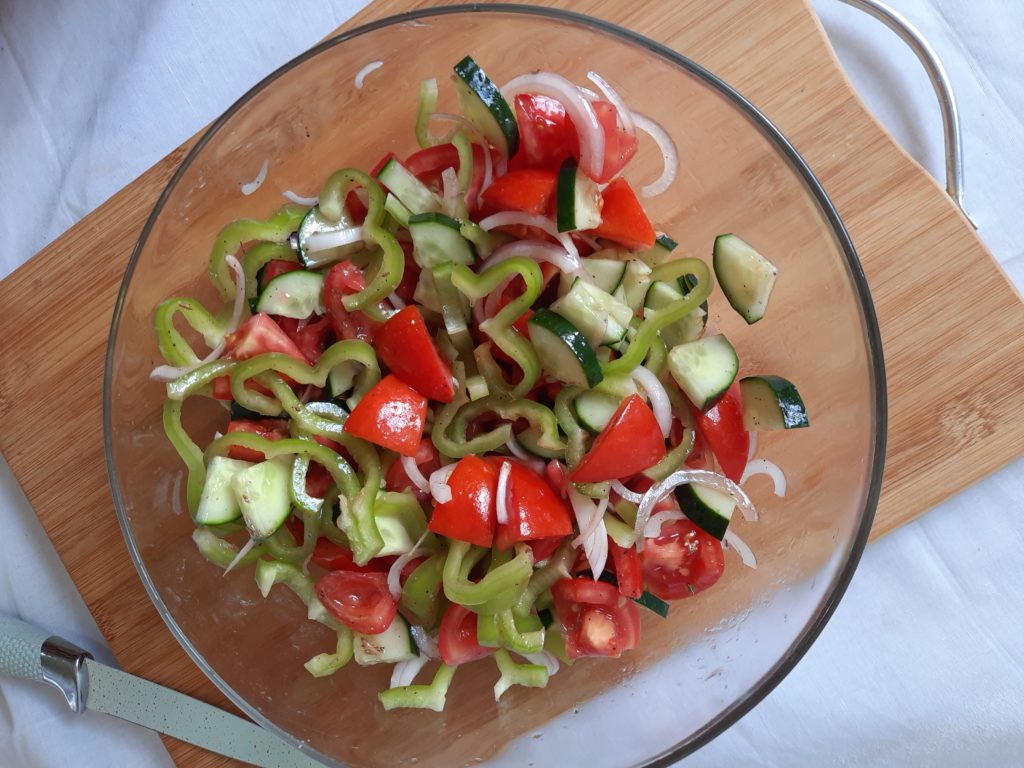
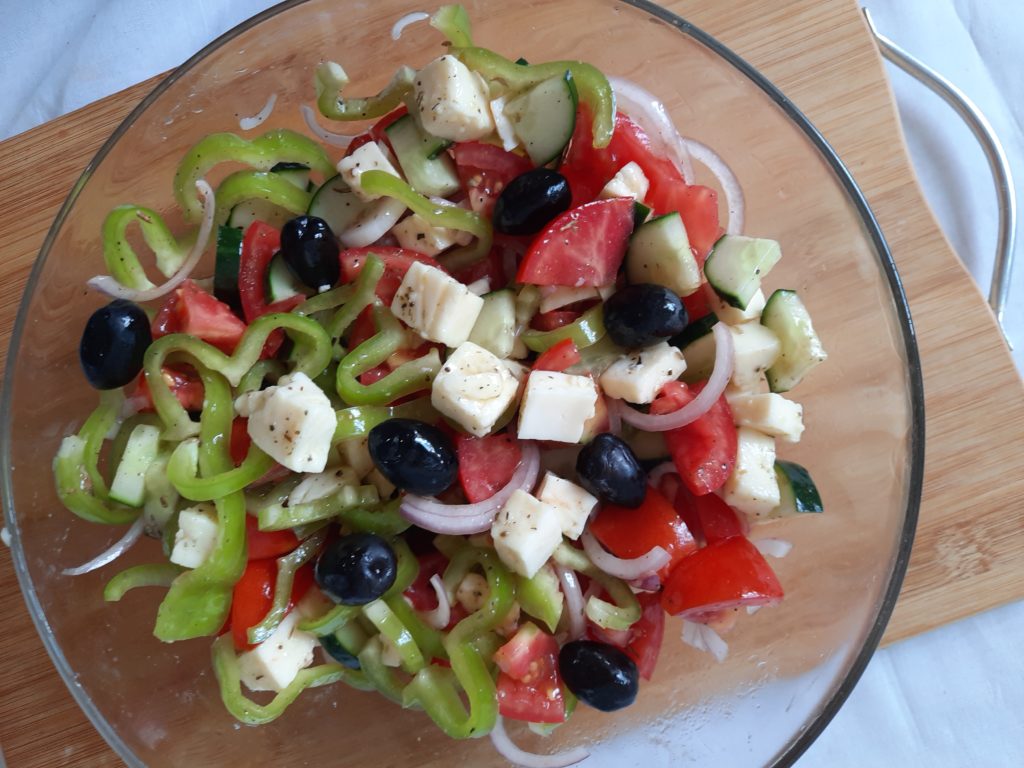

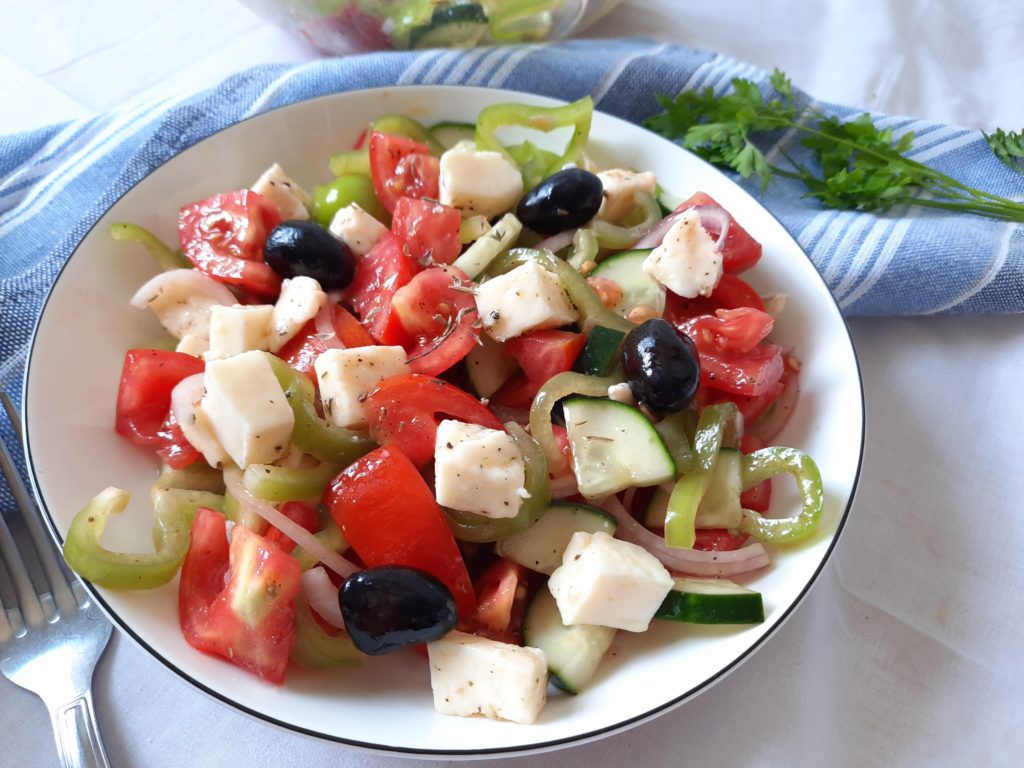

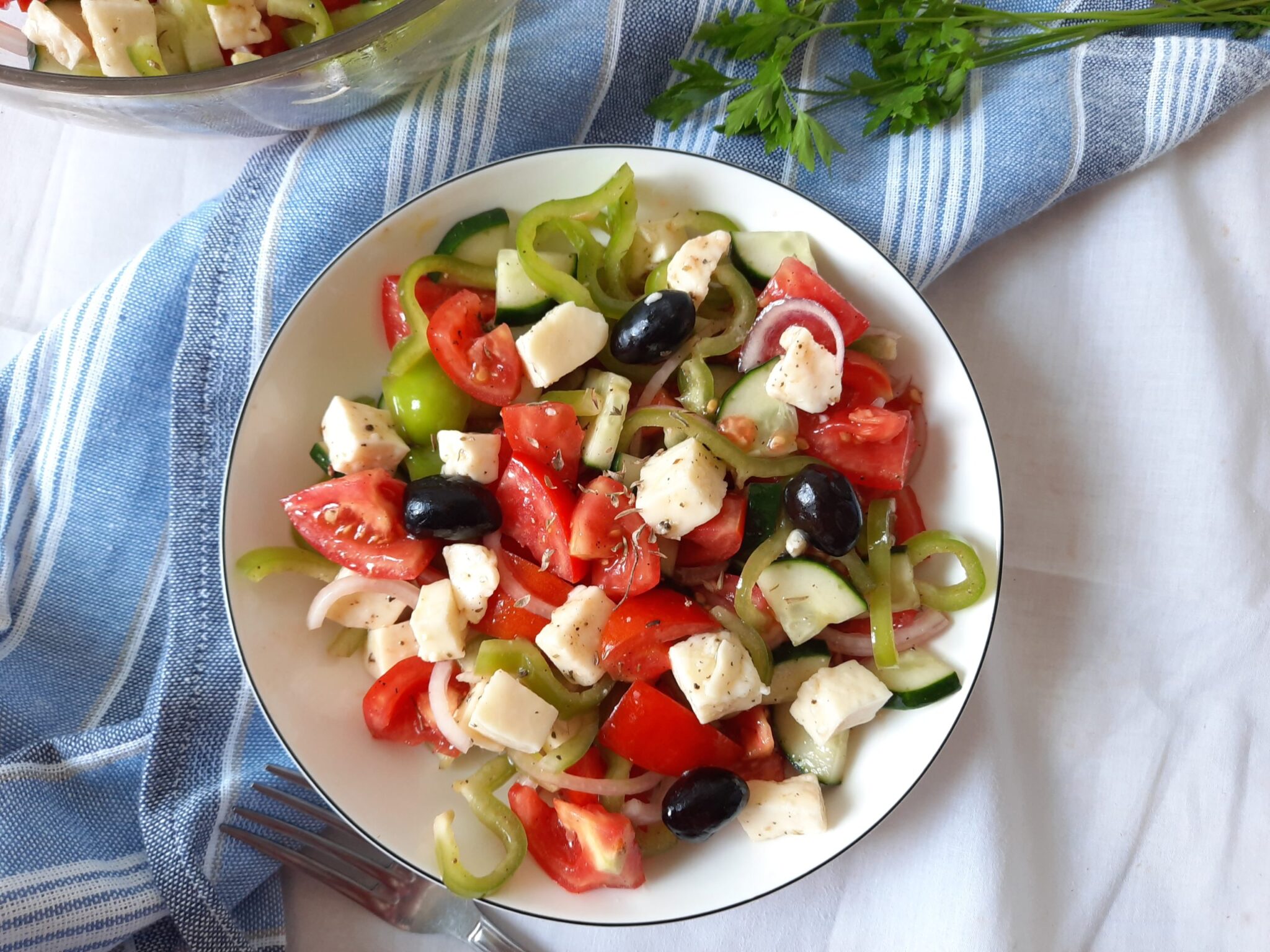




[…] Greek Salad (Horiatiki); […]